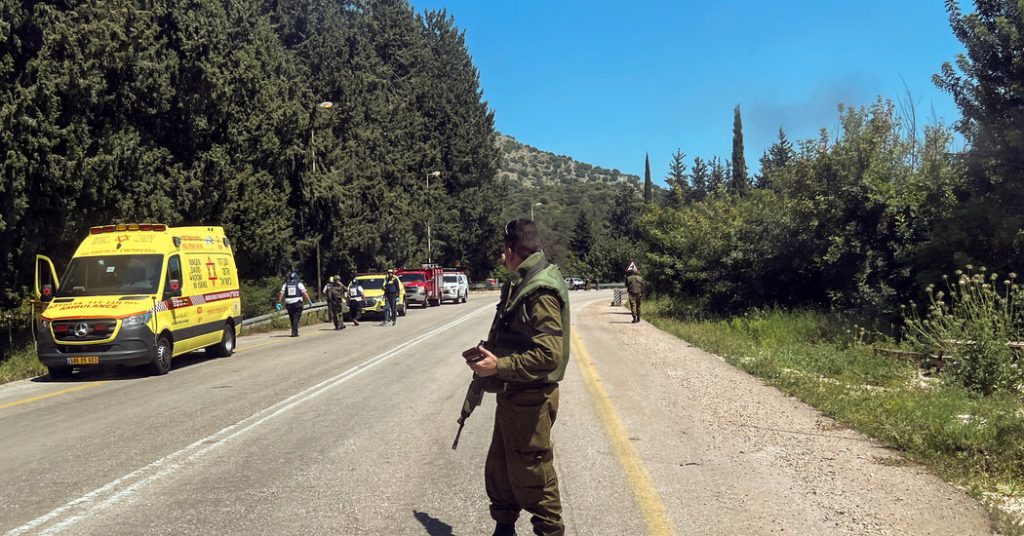The article discusses the recent cross-border drone and missile attack by Hezbollah in northern Israel, which resulted in the injury of 14 soldiers, six of them severely. This attack is considered one of the most damaging in recent months by Hezbollah, Iran’s powerful regional proxy, in its ongoing clashes with Israel. These clashes have escalated following Israel’s targeted killing of two Hezbollah commanders, leading to fears of a broader conflict between Israel and Tehran. In response to Israeli airstrikes that killed the commanders, Hezbollah targeted an Israeli Bedouin border village, Arab al-Aramshe, claiming it was a retaliation.
Hezbollah stated that the target of the attack was an Israeli military reconnaissance unit, while the Israeli military reported that six soldiers were severely injured, two moderately injured, and six lightly injured. In response to the attack, the military conducted strikes on Hezbollah targets in southern Lebanon. The conflict between Hezbollah and Israel has been ongoing for over six months, initially sparked by an attack on Israel led by Hamas, another Iranian proxy group. The fighting has resulted in the displacement of tens of thousands of civilians on both sides of the border, and Israeli strikes inside Lebanon have begun to reach deeper into the country’s interior in recent months.
The tension between Hezbollah and Israel has been escalating, with increasing retaliation attacks on both sides. The Israeli military’s targeted killings of Hezbollah commanders have further fueled the conflict, leading to fears of a wider confrontation between Israel and Iran. The recent attack by Hezbollah on an Israeli border village is seen as a direct response to Israel’s airstrikes, highlighting the volatile situation in the region. The clashes have resulted in significant casualties on both sides, with civilians also being affected by the ongoing violence.
The conflict between Hezbollah and Israel has raised concerns about the potential for a broader regional conflict involving Iran, given Hezbollah’s role as Iran’s proxy in the region. The attacks and counterattacks between the two sides have intensified in recent months, resulting in a significant impact on civilian populations. The Israeli military’s response to Hezbollah’s attacks has further escalated the situation, raising fears of a wider conflict. The involvement of other Iranian proxy groups, such as Hamas, adds to the complexity of the situation and the potential for further escalation in the region.
The ongoing clashes between Hezbollah and Israel highlight the complex dynamics in the Middle East, with multiple proxy groups and regional powers involved in the conflict. The deteriorating security situation in the region has led to fears of a wider regional conflict involving Iran and other actors. The targeting of Israeli military units by Hezbollah and the Israeli military’s retaliatory strikes indicate a dangerous escalation of tensions in the region. The international community has expressed concern about the situation and called for de-escalation to prevent further violence and instability in the region.


